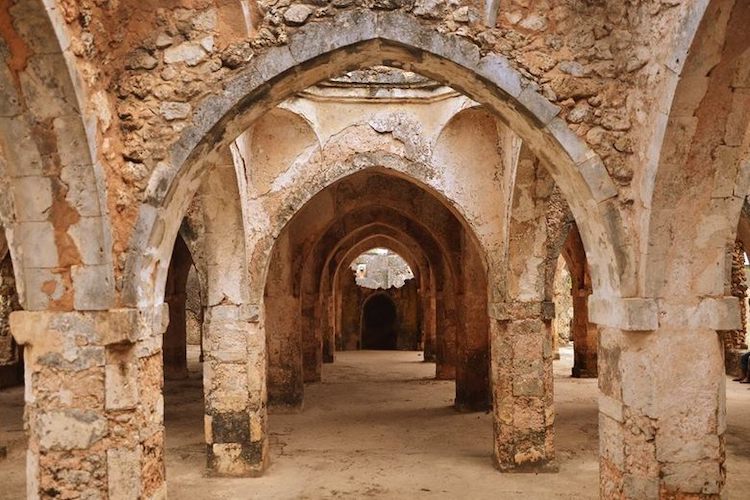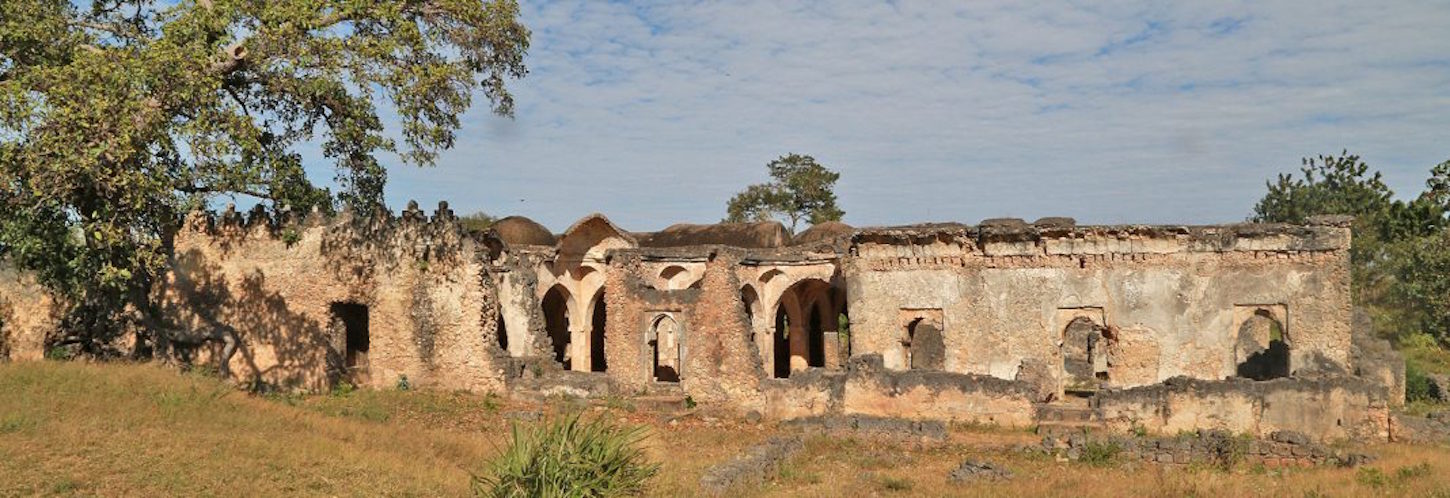Kilwa Kisiwani a former Islamic city capital which is the most renowned of all the ancient trading communities found on the Eastern Africa Swahili coast. The archaeological and historical evidence of this town which is located on an island off the Indian Ocean coast in Southern Tanzania; north of Madagascar reveals that there was active trade between the 11th and 16th centuries between the Indian Ocean and Africa’s interior mainland.
It is believed that this city was founded by early days settlers from Iran as well as Saudi Arabia back in the late tenth century, and it became the busiest commercial center across the East African coast. Between 1502 and 1512, the Portuguese took over this city which, not long after, begun to decline in business and significance, until it was finally abandoned. Today the town stands in extensive ruins of the formerly great Husuni Kubwa Palace, mosques as well as the Portuguese Fort.
Back in its prime days, Kilwa was the leading trade port on the Indian Ocean with slaves, gold, iron and ivory being brought from the interior communities like Mwene Mutabe, found south of river Zambezi, for trade. On the other hand, imported items such as jewelry and clothes from India, as well as glass and ceramics from China were brought to the coast, to be traded by the people of the mainland. The archaeological excavation made at Kilwa in recovered the largest amount of Chinese goods, which included a big number of Chinese coins as compared to other coastal towns.
The history of Kilwa, Southern Tanzania
It is believed that the first people to occupy this town did between the 7th and 8the centuries CE. At that time the town was comprised of rectangular wooden small houses, and the locals were involved in iron smithing. During the archaeological excavations a number of imported wares were discovered and dated to that time, a thing that indicated that these people were already involved in some sort of international trade. There is evidence also of boat use as well for fishing.
The Kilwa Kisiwani and Songo Mnara Ruins were declare as a UNESCO World Heritage site in 1981 due to great history and the Swahili culture, which is basically a blend of the Arabic and African cultures of the people who lived along the East African Coast.
The Evolution of Kilwa into a Major Town
The development of Kilwa during the start of the second millennium CE was part of the Swahili coastal communities becoming a seafaring economy. By the 11th century, the locals had started fishing tuna plus sharks from deep the sea a thing that somewhat widened their network to international trade with longer journeys and ocean infrastructure for easing ship transportation.

The first stone structures were constructed back in 1000 CE, and not long after they managed to construct a town over a one square kilometer area which later on was expanded. The Great Mosque is one of the prominent structures that was constructed at that time using corals minded from the coast. By the 14th Century, other monumental structures were erected such as the palace of Husuni Kubwa, and by 1200 Kilwa had grown into the very first major trade center on the coast under the rule of Shirazi Ali Ibn Al-Hassan.
In the 1300 Kilwa was being ruled by the Mahdali dynasty and the construction of the buildings reached its very top under the rule of Al-Hassan ibn Sulaiman. Other buildings like stone houses, palaces, mosques, walkways and warehouses were constructed. Today building like Husuni Kubwa’s palace, the Husuni Ndogo both dated to the 14th century, the mosque and many others can be seen in Kilwa though they stand in ruins.
The early occupants of Kilwa historical town
From the 9th century to the 19th century, Kilwa Kisiwani was occupied by Oman sultans as well as Persian merchants who developed this town into a booming business hub on the coast of the Indian Ocean. These traded ivory and gold from the congo and Tanzania for Chinese ceramics, perfumes, silver, Persian faience and carnelians. Later the German too occupied this town
Ibn – Battuta a great muslim traveler who visited Kilwa and lived there from 1331 to 1332, he said that this was among the world’s most beautiful towns at the time
Kilwa’s Great Mosque was once the biggest mosque of the kind across the whole of East Africa as it houses two (2) mosques both built in the 11th century.
Kilwa Town Today | Morden Kilwa
When you visit Kilwa Kisiwani today, you will notice that there are two distinct areas there. The northeastern area has a group of tombs plus monuments such as the Great Mosque, which we now call The Kilwa Ruins. The urban area on the other hand has several domestic buildings like the house of the Portico and a fortress that was constructed by the Portuguese.
The Great Mosques
The most eye-catching features in Kilwa are the Great mosques which were constructed between the 13th and 18th century which have earned this place its historical fame. Between the mosques you will see a number of cemeteries plus places of worship which are decorated with ancient Chinese ceramic, ceramics from the Middle East and artifacts from Persia.
The Portuguese Fort
Which is another major attraction here was later used by the Germans and the Arabs as a military base to punish Africans that opposed their presence along the east African coast.
The Makutani Palace
This was built back in 1516, and was fitted with towers to easily observe invaders. It was the home of Kilwa Sultan. It has very spacious rooms and washroom and was entirely decorated with imported ceramics and wares. Trees and orchids were planted in its gardens not only to beautiful but also provide shade around the palace.
Being located in Southern Tanzania, Kilwa Ruins can easily be combined with parks in the Southern Tanzania Circuit like Nyerere National Park which is used to be the famous Selous Game Reserve, and the Mikumi National Park.
Safari Desire organizes very memorable exciting tours in Kilwa as well as to other safari destinations across the rest of Tanzania and Zanzibar.

